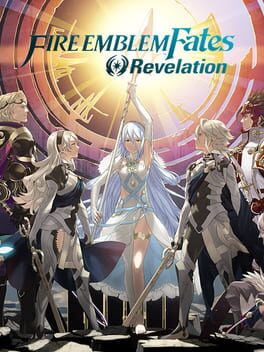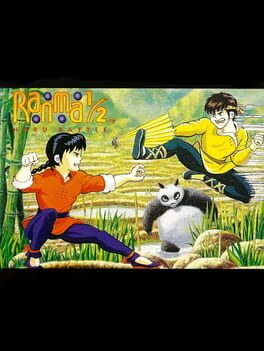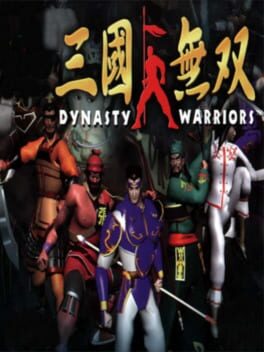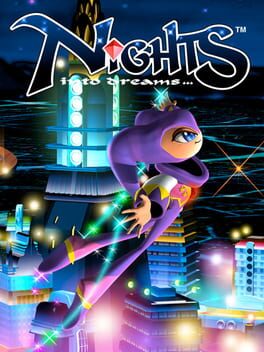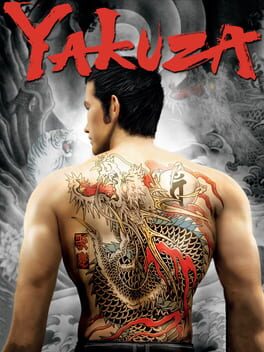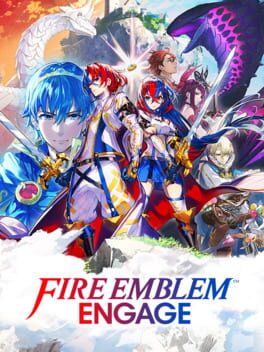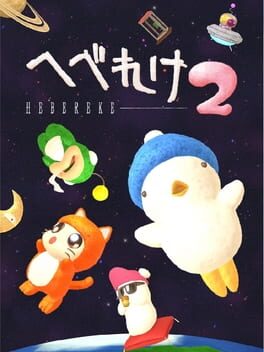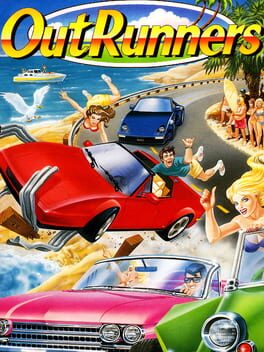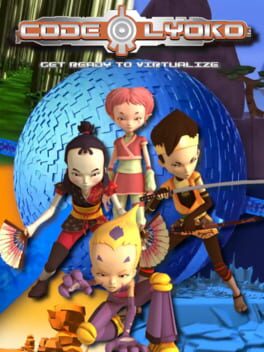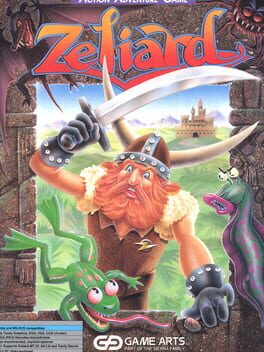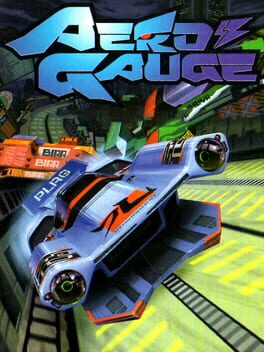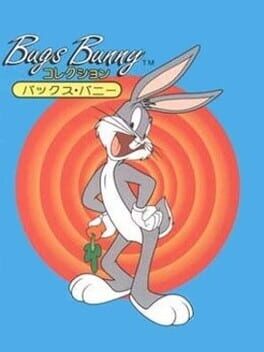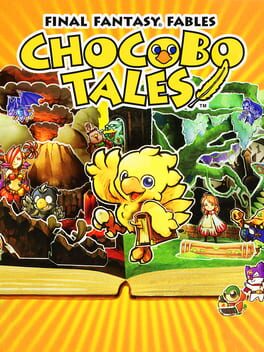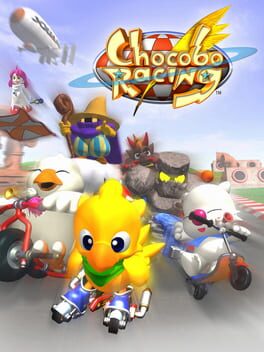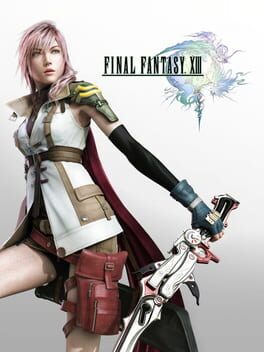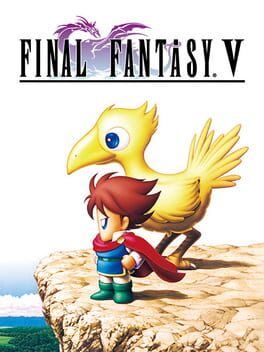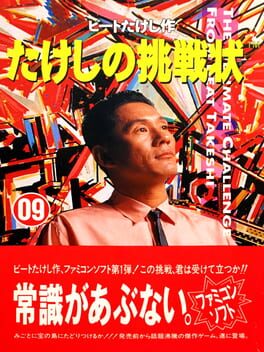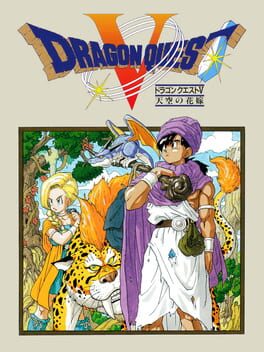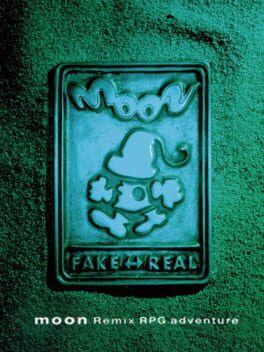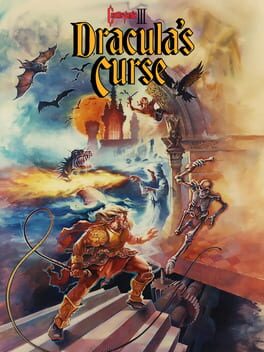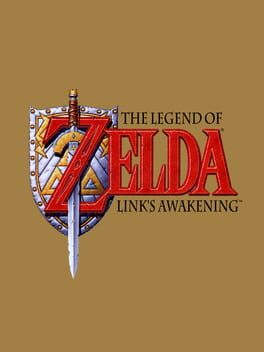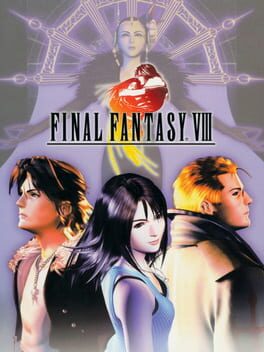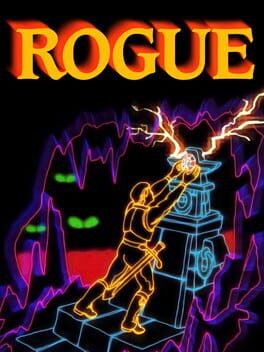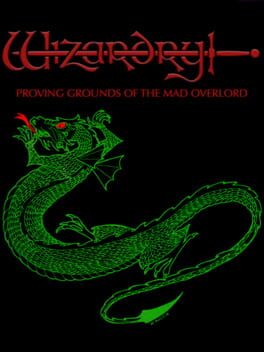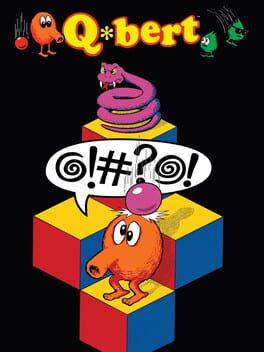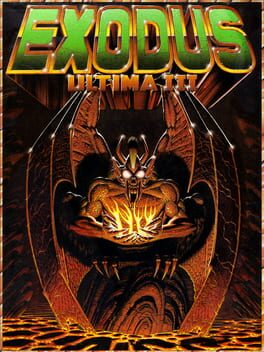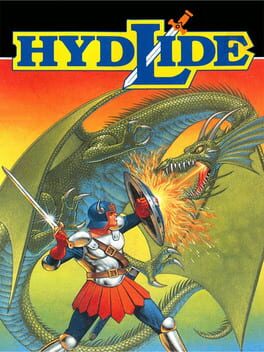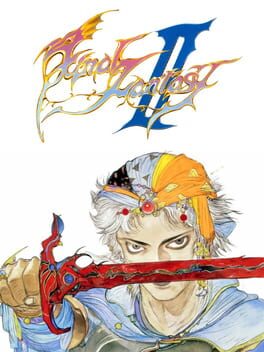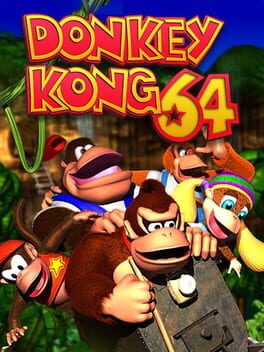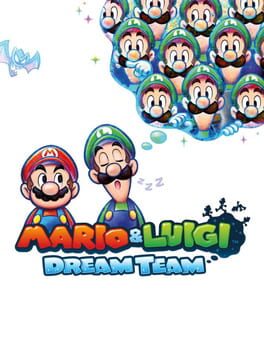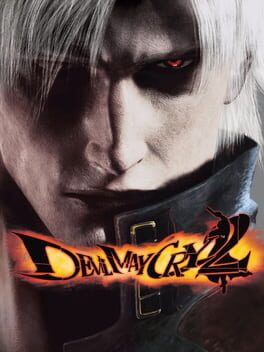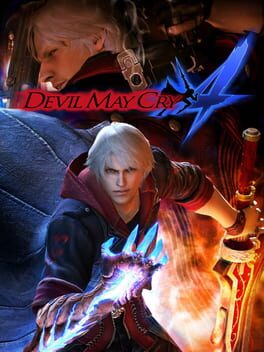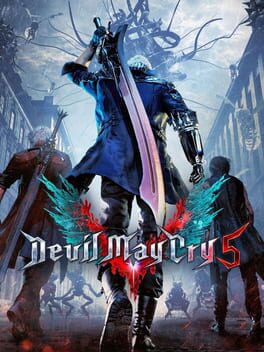WiredAutumn
85 reviews liked by WiredAutumn
Wild Wild Racing
2000
I've come to realize that I've been way too harsh on this game and so I decided to give it another chance. I played it again in the context of the ironman challenge, a self imposed ruleset among Fire Emblem fans where resetting is completely banned. This challenge is, in my humble opinion, the most enjoyable way to play Fire Emblem if you have enough experience with the series, as it forces you to engage with permadeath in away that playing vanilla doesn't and also because the lack of resetting just inherently causes the game to be paced better. This is the most charitable set of conditions I could have played the game in. So what do I think of it now?
It still fucking sucks lmao
It still fucking sucks lmao
Dynasty Warriors
1997
One really cool trend we saw back in the last decade is formerly underground franchises breaking into the mainstream. Persona, Yakuza, Monster Hunter, Fire Emblem, and Xenoblade all had dedicated followings before but are now bringing in more fans than ever. Among these is Balan Wonderworld which blew people away with its frenetic action, deep characters, and philosophical storytelling. Its success led to many people checking out the game’s predecessor, Nights: Into Dreams. And let’s just say that the early installment weirdness is strong with this one.
The biggest issue with Nights could be summed up in four words: Creative ideas, Weird execution. Nowhere is this more evident with the game’s main protagonist Nights. Nights is a character we are supposed to straight up despise. You’re supposed to see them as a mass murdering psychopath. They’re supposed to be the embodiment of the player who kills all the clearly sapient enemies to power up and show what that person who actually be like. In other words, they were the original Chara. Heck, they even got the same pronouns. The game really wants you to hate them and constantly has the other characters as well as the very narration itself call them out.
(Clip of Elliot saying “Full of bloodlust, as always.)
But the problem is that nearly every one of Nights’s murders are completely justified. The game seems to forget the fact that Nights is a soldier fighting a war where the other side wants to destroy seals to release an eldritch abomination upon the world. Also, the enemy soldiers are almost always portrayed as nothing more than simple video game enemies for you to kill. As mangled as the phrase has become, Nights is just doing their job.
The one silver lining to all this is that Yuji Naka learned from his missteps. Balan Wonderworld did a far better job at linking story and gameplay together while Shot2048 gave us a far superior villain protagonist. I’m DestroyerOfMid and I’ll see you in the comments… again.
The biggest issue with Nights could be summed up in four words: Creative ideas, Weird execution. Nowhere is this more evident with the game’s main protagonist Nights. Nights is a character we are supposed to straight up despise. You’re supposed to see them as a mass murdering psychopath. They’re supposed to be the embodiment of the player who kills all the clearly sapient enemies to power up and show what that person who actually be like. In other words, they were the original Chara. Heck, they even got the same pronouns. The game really wants you to hate them and constantly has the other characters as well as the very narration itself call them out.
(Clip of Elliot saying “Full of bloodlust, as always.)
But the problem is that nearly every one of Nights’s murders are completely justified. The game seems to forget the fact that Nights is a soldier fighting a war where the other side wants to destroy seals to release an eldritch abomination upon the world. Also, the enemy soldiers are almost always portrayed as nothing more than simple video game enemies for you to kill. As mangled as the phrase has become, Nights is just doing their job.
The one silver lining to all this is that Yuji Naka learned from his missteps. Balan Wonderworld did a far better job at linking story and gameplay together while Shot2048 gave us a far superior villain protagonist. I’m DestroyerOfMid and I’ll see you in the comments… again.
Drakengard
2003
Yakuza
2005
the streets are soaked in melodrama. To Live Is To Not Run Away. hell yes brother.
see, what sega did here was basically update kunio-kun for 3D because nobody else was gonna do it, and god bless em for it because this game rocks. a game from the golden era of open worlds, with a razor-sharp sense of scope and locations only as detailed as they needed to be for 480i.
yakuza opens with a sleek, stylish and totally unique sega logo, and from that point the presentation never lets up. the opening song "recieve you" instantly sets the tone, and the soundtrack as a whole consists of tasteful funk-rock and alt-metal motifs alongside some brilliant sampling work. visually, the game's a killer too. city streets are adorned with gorgeous baked lighting, and the fixed camera angles paint beautiful portraits of the night life. UI elements are given a clean modern look that reflect kiryu's stoic yet transparent personality. good shit.
storytelling as always is something i'll have trouble articulating my thoughts on but i enjoyed how soapy this was. i could see the big twist coming from 200 miles away but it didn't matter to me. the game successfully makes you care about haruka and yumi and nishiki and everyone else and that's all i can ask for. the notorious voice acting in all fairness WAS pretty bad (save for mark hamill as majima; what an inspired casting!!!) but it didn't hamper my enjoyment of the story in any way. i am also soooo glad this one doesn't have that many substories... not looking forward to the RGG games that mainly consist of those.
the traversal and exploration is very understated though i found it incredibly novel here. kamurocho, being only one district of tokyo, makes for a very small "open world" but one i adore. this is the only game to recreate the feeling of finding a shop/restaurant in your hometown you never knew about, and that rules to me. lots of fun stuff tucked into every corner, like the arms dealer hidden inside a porno dvd shop.
the combat to my surprise was mostly very fun! crowd control is very tough early on, but once you get more upgrades it becomes a fun puzzle to solve for each encounter. keeping the heat gauge up is tricky but it's also incredibly rewarding. almost all good but my two main complaints lie here: most weapons are useless, and turning around is needlessly difficult. you learn to work around these issues but "work around" is the right term here unfortunately.
in the end i'm glad i chose to play this after 2 hours of kiwami left me disappointed years ago. yakuza 1 kicks major ass and part of that is due to how streamlined it feels. that sense of scope i mentioned earlier is there, but it never feels overwhelming. never trust a remake, kids.
(late review, this took me a while to write)
see, what sega did here was basically update kunio-kun for 3D because nobody else was gonna do it, and god bless em for it because this game rocks. a game from the golden era of open worlds, with a razor-sharp sense of scope and locations only as detailed as they needed to be for 480i.
yakuza opens with a sleek, stylish and totally unique sega logo, and from that point the presentation never lets up. the opening song "recieve you" instantly sets the tone, and the soundtrack as a whole consists of tasteful funk-rock and alt-metal motifs alongside some brilliant sampling work. visually, the game's a killer too. city streets are adorned with gorgeous baked lighting, and the fixed camera angles paint beautiful portraits of the night life. UI elements are given a clean modern look that reflect kiryu's stoic yet transparent personality. good shit.
storytelling as always is something i'll have trouble articulating my thoughts on but i enjoyed how soapy this was. i could see the big twist coming from 200 miles away but it didn't matter to me. the game successfully makes you care about haruka and yumi and nishiki and everyone else and that's all i can ask for. the notorious voice acting in all fairness WAS pretty bad (save for mark hamill as majima; what an inspired casting!!!) but it didn't hamper my enjoyment of the story in any way. i am also soooo glad this one doesn't have that many substories... not looking forward to the RGG games that mainly consist of those.
the traversal and exploration is very understated though i found it incredibly novel here. kamurocho, being only one district of tokyo, makes for a very small "open world" but one i adore. this is the only game to recreate the feeling of finding a shop/restaurant in your hometown you never knew about, and that rules to me. lots of fun stuff tucked into every corner, like the arms dealer hidden inside a porno dvd shop.
the combat to my surprise was mostly very fun! crowd control is very tough early on, but once you get more upgrades it becomes a fun puzzle to solve for each encounter. keeping the heat gauge up is tricky but it's also incredibly rewarding. almost all good but my two main complaints lie here: most weapons are useless, and turning around is needlessly difficult. you learn to work around these issues but "work around" is the right term here unfortunately.
in the end i'm glad i chose to play this after 2 hours of kiwami left me disappointed years ago. yakuza 1 kicks major ass and part of that is due to how streamlined it feels. that sense of scope i mentioned earlier is there, but it never feels overwhelming. never trust a remake, kids.
(late review, this took me a while to write)
Fire Emblem Engage
2023
For better or worse, Fire Emblem is a formative part of who I am. The works we choose to Engage™ with in our youth tends to form a basis of our media literacy and in which initial appreciation for art stems. The ideas and themes we are first exposed to are inherently novel after all. With little else to compare with, these stories are earnestly received as they are indulged in. We have yet to form the necessary experiences to be critical, let alone know of contempt. And so, we view these early works that we are exposed to undeservedly favourably. This insidious phenomenon that retroactively becomes seen as nostalgia is something I must overcome! I like to think I have grown much since my youth. I can do it now! I am strong enough! It is time for me to condemn the naive joys of my past and see them as what they truly are so that I may live solely in the present. I will not shy away at the edge of dawn. It is time to destroy Fire Emblem, this puppy love of mine. This latest entry shall serve as a perfect target of my ire.
However, before I can get to condemning Engage™, there is necessary context that must be considered. It is not just a standalone iterative sequel after all. It is the celebratory title! It would seek to present itself as the ultimate culmination of an anthology. A statement of the series in its whole. The final destination of a long journey. If it dares to lay claim to such lofty dominion, then it elicits proper scrutiny. We will not just judge Fire Emblem Engage™ by what it is, but also, on what it isn’t. What it could have been. What it SHOULD have been!
Fire Emblem history, to me, is comprised of three distinct eras. The ‘Kaga Saga’, the first of which, having a particularly distinctive creative direction. Serving as the foundational ethos for all the future games to come, these early games were experimental in nature. More willing than most to utilise the unique qualities of videogames as a medium to tell its stories. Most infamously, Fire Emblem sought to embed a real sense of loss into its players by having characters permanently die should they fall during gameplay. That these characters with unique face, motivations and statistical significance would live and die through your hand was meant to instill a personal connection with Fire Emblem’s world. Such means of connection being only feasible through this uniquely dynamic aspect of video games.
And so, Fire Emblem was initially conceived to be a series about using games as a means of storytelling. A cohesive blend of gameplay with a narrative it wished to convey.
I have not played any of those games from that era. I am a fake fan, a poser, a revisionist. There is much to discuss of these entries that I have not the capacity or experience to do so. Instead, the games that I will elaborate upon comprise the second of these three Fire Emblem eras. That which I shall dub as the era of ‘Sanitation’. You see, that previous visionary ethos of character death was too successful. Most players were found unwilling to see the characters in which they are made to feel responsible for die, and instead of Engaging™ with this creative vision, would simply reset chapters until everyone survived. Creative intent clashed with the reality of a player’s actions. As these games had the ultimate purpose of seeking commercial success over making artistic statements, concessions were made to make the design of these games more tailored for the preferences of its general audience.
Yet even after the sanitation that ensued, alternative creative avenues were still sought to be explored, and though dulled, much remained of the original design philosophies post transition. Permadeath was kept, but instead of being a vestigial idea that players ignored, was retained explicitly because it was expected players would seek to circumvent it. If players were unwilling to let these previously expendable characters die, then why not encourage this behaviour? And so, these side characters became more integral and more significant within their stories. Fire Emblem was revised and recontextualized to be a series about the bonds we cultivate. This change of perspective inspired the most formative feature of this second generation, the support system.
Young me was enamoured by this concept! This method of storytelling I indulged in with earnestly, novel to me then as it was. Each character no matter how seemingly humble or insignificant would be given unique characterization through multiple conversations with others among the cast, conversations that had to be sought out by an invested player. Each of these conversations would in turn give you a tidbit of nuance of their character and the circumstances in which they exist. As you weave together these microstories you would unravel the nature of entire worlds. An understanding of why characters are the way they are, the rationale behind their actions, the material circumstances in which conflict is born. From this understanding you would find these simplistic stories are not as straightforward as they initially appear. The unique traits of videogames as a medium were still being utilized to tell stories. This time though through the ability to obfuscate details and dispense them piecemeal as a prize for the curious to seek.
Fire Emblem had adapted to its audience. It had become a series about story telling as a puzzle. It sought to exploit a player’s desire for discovery and willingness to Engage™ with character analysis and interpretation. Whilst deliberately echoing and iterating on past tropes and story beats from previous entries in which to contrast and compare against.
However no one, not even curious children with little responsibility, have the time to seek out all these support conversations individually. Instead, this support system deliberately or not, encouraged a certain type of Engagement™. Rather than spending 100s of hours repeating playthroughs just to see a few additional lines of text, these support conversations would be found much more readily accessible online in compilations on dedicated fan-sites. This centralization of resources became a hub of traffic. Communities formed around them, and so Fire Emblem had become more than just a series of games, it had become a culture in of itself.
Fire Emblem was now more than just the media it was sold as. It had become an outlet for discussion and critique. A way in which we can Engage™ with others who shared a passion for a niche media franchise. It had developed to become a cult, otherwise known as a fandom. An avenue of endless pontification about its characters, the ways it should be played and our individual experiences.
This second era of Fire Emblem would also not produce the requisite quota of milk deemed satisfactory to its masters. And so, the series was called away to be culled. Rather than go out quietly however, it was given one final mercy. A swansong game in which the series could be laid neatly to rest. And so, we entered the final and ongoing era of Fire Emblem: “Purpose (Id)”.
At the time I had wished Fire Emblem Awakening would have been the end of the series. It was so antithetical to what I was used to. A corrupted and revenant corpse of something I once loved. Tight deliberate mechanical design and maps were discarded in favour of a game that encouraged you to simply grind out your characters to become unkillable juggernauts. A cast of realistic and considered characters that defined the nature of the world they lived in had been replaced by one-note caricatures. Romantic pairings, which were once reserved for those with unique chemistry were now omnipresent for every and any male and female combination. All this just to enable the kids of these pairings to join your army in a mockery of one of the most incredible narrative twists of a previous entry of the series (that I hadn’t played).
Nostalgia is an insidious phenomenon. The very same spell that had captivated my younger self I was now resentful of others experiencing. My love after all was targeted towards something tangible, real, meaningful while that of these new fans was not. I would not have the Revelation™ for quite some time that this love was derived from the same source. That willingness to see the best qualities of something without a frame of reference in which to compare.
Seemingly equally confused by the financial success of Awakening as I, it’s producers immediately sought to ascertain as to the reason why through a curious application of market research. The next game in the series was released as a set of two, appealing to the separate expectations of newer fans as well as that of the ostracised veterans. It was a reactionary bid seeking to retain as much audience as it could. A final third game in the set would seek to reconcile the rift between these two audiences.
It was enough to temper me. Although it was apparent the prose and tone of Fire Emblem had been irrevocably changed forever there was something here that I could still latch onto. Fire Emblem may no longer have the capacity anymore to tell grounded or even coherent tales but as a mechanical object this iteration was unsurpassed. These embedded gameplay systems in which I was intimate with still persisted. I was content. Ready to move on and accept maybe what I saw in Fire Emblem wasn’t real. Just a naïve interpretation of the past. But then a beautiful tragedy occurred.
Three Houses. What a miserable chore to play! The antithesis of Fates: Conquest. Any vision it had for its gameplay either as artistic statement or as mechanical toy failed to manifest in a satisfactory way. And yet this game would leave me elated. It was perfect in a way that truly mattered. For it contained that aspect of Fire Emblem which I had thought was lost forever. What this lacked as a tactile game experience it more than made up through its quality of its narrative and its method of delivery. Yes, experiencing it all is a nightmare. Important details are scattered across four separate playthroughs and hundreds of optional and slowly dispensed dialogue events that no one with respect to their time is going to see all of it. But this was exactly how it should be! This was the Fire Emblem of my youth that I remembered. The antiquated method of storytelling from my nostalgia. Story as puzzle dispensed piecemeal. It was perhaps even better than it was in the past as there was no primary perspective of its story to cling to as ‘correct’. These different perspectives and the audience’s preconceptions would lead to extrapolating different interpretations from its details. Pictures that would be incompatible with those assembled by others. This lack of consensus on whose was ‘correct’ would facilitate endless debate, inspiring discussion and ultimately critical engagement with its story characters and themes. The tragedy of three houses is that it seemingly vindicated my nostalgia. That nostalgia I am now resolved to kill.
This preamble does not end on Hope™. There is one final game to discuss. The most integral and influential game to the future of the series. Fire Emblem makes money now. Lots of it. It is now a covetous cash cow. One of its games alone has surpassed the revenue of the rest of the series combined. That game is Fire Emblem Heroes and it is a drain upon all the goodwill of the series. Decades of character discussion, interpretations, fan translations of the many games that were never released internationally, are commodified, and then consumed by this beast. Three Houses was not made in-house and it shows. It was an outsourced project to keep the fanbase Engaged™ as the next direction of Fire Emblem was developed. The existence of Heroes means all future characters in the series are now designed for you to imprint upon so that they may be resold back to you in the most exploitatory way that is somehow still legal. That is the preconception for Fire Emblem Engage.
Fire Emblem that I had once viewed as a benevolent deity of storytelling had degenerated into a fell dragon needing to be slain. The fandom cultivated out of a shared love and passion was being used and preyed upon by that which it sought to enshrine. Was this always the series’ ultimate intention? The end goal of any corporate ip? It matters not, I have gathered all the necessary context needed. It is time to slay a degenerative dragon. I am ready to let go of the past. I am ready to kill this nostalgia within myself. I need to let go.
Resolution burning bright I would find little to dissuade this righteous fury within the opening acts. The world of Lythos is contrived to hell, deliberately so. There is no ambition here nor desire to tell a story that reflects upon or contrasts against a living world. Every creature here is an automaton, a faux imitation only resembling life. Vtuber avatars frolic about a story where conflict is abhorred, yet its root cause is never sought. A mandate of heaven is seen as absolute and unchallenged, as the cast indulge in a luxury resort above the clouds above an uninvolved populace. A zodiac of Fire Emblems past have their status cemented as commodities. Trinkets to flaunt and collect serving to establish the authority of a supposedly divine deity. The irony of how these emblems parallel a recurring theme of the series involving twelve ‘dead lords’ is not lost upon me.
Yet as the chapters go by, I find my resolve wavering. When your expectations start at the bottom of a ravine, it leaves the only direction left to climb. These caricatures clearly made to serve as an asset pack for a gacha game, slowly wear me down through a consistent message that concludes many of their story arcs. That we should not allow one’s past to define one’s future. I listen to this message because deep down it is something I want to hear. I am made to believe there is something salvageable and sincere beneath an ugly veneer. That I am wrong to judge Engage on what the series used to be. I should accept it on what it is and seeks to become.
I disengage. Yes, these characters do not compare as the ones in the gilded memories of the past or even that of the prior game, but there are aspects to like here. Templates in which I can extrapolate depth and nuance. Details to discover in which I can discuss and share with others. I can fix them! Both through gameplay and narratively. I am even provided the tools to do so. The game facilitating the means to combine traits taken of previous games to these characters. I can take ownership. Ascribe to them my own meaning. Is this not the culmination of what Fire Emblem is about? That ultimately we the audience are the arbiters of its story?
And so at journey’s end I hesitate. I find that I cannot will myself to kill this creature after all. There is a part of me still contained within. A part I still love. A sword wavers with conviction shattered. All I need is any reason, and I’ll let you go. Give me nothing even, be unrepentant and we can still live in peace. Arcadia can exist. Humans can live at peace with dragons.
The creature looks deep into my eyes. It sees shattered resolve, an extended hand. It sees only sovereign delusion. It rejects me thus, “I did it for Zero Emblem” uttered defiantly with no shame or remorse. This phrase is pure nonsense. A meaningless string of words that not even its speaker can decipher. It is not intended to be satisfactory nor received well. Even the most earnest of readings would find these words ring hollow. It is a proclamation of intent. A dismissal of peace. The game is telling me that I am wrong about it. That I am seeing something that was never there. That this was always a completely unserious farce and that I am foolish for seeing otherwise. A dagger reached for to provoke my reaction.
I can only oblige and stab it through the heart. We both always knew this was the only way this could possibly end. The beast is slain and I am free to move on. Thankyou for letting me go.
Fire Emblem is a series about the myriad ways in which we Engage™ with media. It has grown and adapted in response to how it has been perceived. It is a series that only still exists and thrives in the present because of the community that has formed around it. It would have us believe that it owns us because it sired that which we love. But we owe it nothing. This love is ours to shape and ours to reclaim.
I hate that I love these games so much.
“A world riven by pride, Repaired at last. And now its makers can be at rest, Our vision come to pass.”
(I recommend Engage to only Fire Emblem’s biggest fans. I recommend it to Its biggest haters. I recommend it to no one in between. It has absolutely succeeded in being the culmination of the series. As a mechanical object it is best in class. As a thesis statement of the series as a whole, it is a perfect tragedy. There is some genuine care here buried underneath a shallow exterior. Yet there is no way to save it. The game’s premise and the purpose on which it came to exist is antithetical to love. But there is closure to be had in laying it to rest)
However, before I can get to condemning Engage™, there is necessary context that must be considered. It is not just a standalone iterative sequel after all. It is the celebratory title! It would seek to present itself as the ultimate culmination of an anthology. A statement of the series in its whole. The final destination of a long journey. If it dares to lay claim to such lofty dominion, then it elicits proper scrutiny. We will not just judge Fire Emblem Engage™ by what it is, but also, on what it isn’t. What it could have been. What it SHOULD have been!
Fire Emblem history, to me, is comprised of three distinct eras. The ‘Kaga Saga’, the first of which, having a particularly distinctive creative direction. Serving as the foundational ethos for all the future games to come, these early games were experimental in nature. More willing than most to utilise the unique qualities of videogames as a medium to tell its stories. Most infamously, Fire Emblem sought to embed a real sense of loss into its players by having characters permanently die should they fall during gameplay. That these characters with unique face, motivations and statistical significance would live and die through your hand was meant to instill a personal connection with Fire Emblem’s world. Such means of connection being only feasible through this uniquely dynamic aspect of video games.
And so, Fire Emblem was initially conceived to be a series about using games as a means of storytelling. A cohesive blend of gameplay with a narrative it wished to convey.
I have not played any of those games from that era. I am a fake fan, a poser, a revisionist. There is much to discuss of these entries that I have not the capacity or experience to do so. Instead, the games that I will elaborate upon comprise the second of these three Fire Emblem eras. That which I shall dub as the era of ‘Sanitation’. You see, that previous visionary ethos of character death was too successful. Most players were found unwilling to see the characters in which they are made to feel responsible for die, and instead of Engaging™ with this creative vision, would simply reset chapters until everyone survived. Creative intent clashed with the reality of a player’s actions. As these games had the ultimate purpose of seeking commercial success over making artistic statements, concessions were made to make the design of these games more tailored for the preferences of its general audience.
Yet even after the sanitation that ensued, alternative creative avenues were still sought to be explored, and though dulled, much remained of the original design philosophies post transition. Permadeath was kept, but instead of being a vestigial idea that players ignored, was retained explicitly because it was expected players would seek to circumvent it. If players were unwilling to let these previously expendable characters die, then why not encourage this behaviour? And so, these side characters became more integral and more significant within their stories. Fire Emblem was revised and recontextualized to be a series about the bonds we cultivate. This change of perspective inspired the most formative feature of this second generation, the support system.
Young me was enamoured by this concept! This method of storytelling I indulged in with earnestly, novel to me then as it was. Each character no matter how seemingly humble or insignificant would be given unique characterization through multiple conversations with others among the cast, conversations that had to be sought out by an invested player. Each of these conversations would in turn give you a tidbit of nuance of their character and the circumstances in which they exist. As you weave together these microstories you would unravel the nature of entire worlds. An understanding of why characters are the way they are, the rationale behind their actions, the material circumstances in which conflict is born. From this understanding you would find these simplistic stories are not as straightforward as they initially appear. The unique traits of videogames as a medium were still being utilized to tell stories. This time though through the ability to obfuscate details and dispense them piecemeal as a prize for the curious to seek.
Fire Emblem had adapted to its audience. It had become a series about story telling as a puzzle. It sought to exploit a player’s desire for discovery and willingness to Engage™ with character analysis and interpretation. Whilst deliberately echoing and iterating on past tropes and story beats from previous entries in which to contrast and compare against.
However no one, not even curious children with little responsibility, have the time to seek out all these support conversations individually. Instead, this support system deliberately or not, encouraged a certain type of Engagement™. Rather than spending 100s of hours repeating playthroughs just to see a few additional lines of text, these support conversations would be found much more readily accessible online in compilations on dedicated fan-sites. This centralization of resources became a hub of traffic. Communities formed around them, and so Fire Emblem had become more than just a series of games, it had become a culture in of itself.
Fire Emblem was now more than just the media it was sold as. It had become an outlet for discussion and critique. A way in which we can Engage™ with others who shared a passion for a niche media franchise. It had developed to become a cult, otherwise known as a fandom. An avenue of endless pontification about its characters, the ways it should be played and our individual experiences.
This second era of Fire Emblem would also not produce the requisite quota of milk deemed satisfactory to its masters. And so, the series was called away to be culled. Rather than go out quietly however, it was given one final mercy. A swansong game in which the series could be laid neatly to rest. And so, we entered the final and ongoing era of Fire Emblem: “Purpose (Id)”.
At the time I had wished Fire Emblem Awakening would have been the end of the series. It was so antithetical to what I was used to. A corrupted and revenant corpse of something I once loved. Tight deliberate mechanical design and maps were discarded in favour of a game that encouraged you to simply grind out your characters to become unkillable juggernauts. A cast of realistic and considered characters that defined the nature of the world they lived in had been replaced by one-note caricatures. Romantic pairings, which were once reserved for those with unique chemistry were now omnipresent for every and any male and female combination. All this just to enable the kids of these pairings to join your army in a mockery of one of the most incredible narrative twists of a previous entry of the series (that I hadn’t played).
Nostalgia is an insidious phenomenon. The very same spell that had captivated my younger self I was now resentful of others experiencing. My love after all was targeted towards something tangible, real, meaningful while that of these new fans was not. I would not have the Revelation™ for quite some time that this love was derived from the same source. That willingness to see the best qualities of something without a frame of reference in which to compare.
Seemingly equally confused by the financial success of Awakening as I, it’s producers immediately sought to ascertain as to the reason why through a curious application of market research. The next game in the series was released as a set of two, appealing to the separate expectations of newer fans as well as that of the ostracised veterans. It was a reactionary bid seeking to retain as much audience as it could. A final third game in the set would seek to reconcile the rift between these two audiences.
It was enough to temper me. Although it was apparent the prose and tone of Fire Emblem had been irrevocably changed forever there was something here that I could still latch onto. Fire Emblem may no longer have the capacity anymore to tell grounded or even coherent tales but as a mechanical object this iteration was unsurpassed. These embedded gameplay systems in which I was intimate with still persisted. I was content. Ready to move on and accept maybe what I saw in Fire Emblem wasn’t real. Just a naïve interpretation of the past. But then a beautiful tragedy occurred.
Three Houses. What a miserable chore to play! The antithesis of Fates: Conquest. Any vision it had for its gameplay either as artistic statement or as mechanical toy failed to manifest in a satisfactory way. And yet this game would leave me elated. It was perfect in a way that truly mattered. For it contained that aspect of Fire Emblem which I had thought was lost forever. What this lacked as a tactile game experience it more than made up through its quality of its narrative and its method of delivery. Yes, experiencing it all is a nightmare. Important details are scattered across four separate playthroughs and hundreds of optional and slowly dispensed dialogue events that no one with respect to their time is going to see all of it. But this was exactly how it should be! This was the Fire Emblem of my youth that I remembered. The antiquated method of storytelling from my nostalgia. Story as puzzle dispensed piecemeal. It was perhaps even better than it was in the past as there was no primary perspective of its story to cling to as ‘correct’. These different perspectives and the audience’s preconceptions would lead to extrapolating different interpretations from its details. Pictures that would be incompatible with those assembled by others. This lack of consensus on whose was ‘correct’ would facilitate endless debate, inspiring discussion and ultimately critical engagement with its story characters and themes. The tragedy of three houses is that it seemingly vindicated my nostalgia. That nostalgia I am now resolved to kill.
This preamble does not end on Hope™. There is one final game to discuss. The most integral and influential game to the future of the series. Fire Emblem makes money now. Lots of it. It is now a covetous cash cow. One of its games alone has surpassed the revenue of the rest of the series combined. That game is Fire Emblem Heroes and it is a drain upon all the goodwill of the series. Decades of character discussion, interpretations, fan translations of the many games that were never released internationally, are commodified, and then consumed by this beast. Three Houses was not made in-house and it shows. It was an outsourced project to keep the fanbase Engaged™ as the next direction of Fire Emblem was developed. The existence of Heroes means all future characters in the series are now designed for you to imprint upon so that they may be resold back to you in the most exploitatory way that is somehow still legal. That is the preconception for Fire Emblem Engage.
Fire Emblem that I had once viewed as a benevolent deity of storytelling had degenerated into a fell dragon needing to be slain. The fandom cultivated out of a shared love and passion was being used and preyed upon by that which it sought to enshrine. Was this always the series’ ultimate intention? The end goal of any corporate ip? It matters not, I have gathered all the necessary context needed. It is time to slay a degenerative dragon. I am ready to let go of the past. I am ready to kill this nostalgia within myself. I need to let go.
Resolution burning bright I would find little to dissuade this righteous fury within the opening acts. The world of Lythos is contrived to hell, deliberately so. There is no ambition here nor desire to tell a story that reflects upon or contrasts against a living world. Every creature here is an automaton, a faux imitation only resembling life. Vtuber avatars frolic about a story where conflict is abhorred, yet its root cause is never sought. A mandate of heaven is seen as absolute and unchallenged, as the cast indulge in a luxury resort above the clouds above an uninvolved populace. A zodiac of Fire Emblems past have their status cemented as commodities. Trinkets to flaunt and collect serving to establish the authority of a supposedly divine deity. The irony of how these emblems parallel a recurring theme of the series involving twelve ‘dead lords’ is not lost upon me.
Yet as the chapters go by, I find my resolve wavering. When your expectations start at the bottom of a ravine, it leaves the only direction left to climb. These caricatures clearly made to serve as an asset pack for a gacha game, slowly wear me down through a consistent message that concludes many of their story arcs. That we should not allow one’s past to define one’s future. I listen to this message because deep down it is something I want to hear. I am made to believe there is something salvageable and sincere beneath an ugly veneer. That I am wrong to judge Engage on what the series used to be. I should accept it on what it is and seeks to become.
I disengage. Yes, these characters do not compare as the ones in the gilded memories of the past or even that of the prior game, but there are aspects to like here. Templates in which I can extrapolate depth and nuance. Details to discover in which I can discuss and share with others. I can fix them! Both through gameplay and narratively. I am even provided the tools to do so. The game facilitating the means to combine traits taken of previous games to these characters. I can take ownership. Ascribe to them my own meaning. Is this not the culmination of what Fire Emblem is about? That ultimately we the audience are the arbiters of its story?
And so at journey’s end I hesitate. I find that I cannot will myself to kill this creature after all. There is a part of me still contained within. A part I still love. A sword wavers with conviction shattered. All I need is any reason, and I’ll let you go. Give me nothing even, be unrepentant and we can still live in peace. Arcadia can exist. Humans can live at peace with dragons.
The creature looks deep into my eyes. It sees shattered resolve, an extended hand. It sees only sovereign delusion. It rejects me thus, “I did it for Zero Emblem” uttered defiantly with no shame or remorse. This phrase is pure nonsense. A meaningless string of words that not even its speaker can decipher. It is not intended to be satisfactory nor received well. Even the most earnest of readings would find these words ring hollow. It is a proclamation of intent. A dismissal of peace. The game is telling me that I am wrong about it. That I am seeing something that was never there. That this was always a completely unserious farce and that I am foolish for seeing otherwise. A dagger reached for to provoke my reaction.
I can only oblige and stab it through the heart. We both always knew this was the only way this could possibly end. The beast is slain and I am free to move on. Thankyou for letting me go.
Fire Emblem is a series about the myriad ways in which we Engage™ with media. It has grown and adapted in response to how it has been perceived. It is a series that only still exists and thrives in the present because of the community that has formed around it. It would have us believe that it owns us because it sired that which we love. But we owe it nothing. This love is ours to shape and ours to reclaim.
I hate that I love these games so much.
“A world riven by pride, Repaired at last. And now its makers can be at rest, Our vision come to pass.”
(I recommend Engage to only Fire Emblem’s biggest fans. I recommend it to Its biggest haters. I recommend it to no one in between. It has absolutely succeeded in being the culmination of the series. As a mechanical object it is best in class. As a thesis statement of the series as a whole, it is a perfect tragedy. There is some genuine care here buried underneath a shallow exterior. Yet there is no way to save it. The game’s premise and the purpose on which it came to exist is antithetical to love. But there is closure to be had in laying it to rest)


